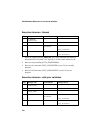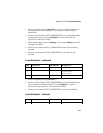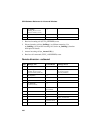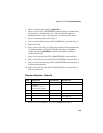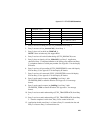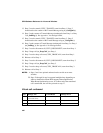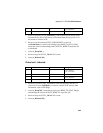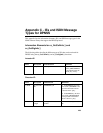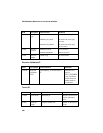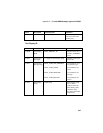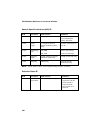
ISDN Software Reference for Linux and Windows
422
13. Party 2 receives transit (CCEV_TRANSIT) event from Party 1. Party 2
should retrieve the content of the Transmit Message using cc_GetSigInfo( ).
14. Party 2 sends content of Transmit Message (unchanged) from Party 1 to Party
3 (cc_SndMsg( )). See Appendix C for message format.
15. Party 2 receives transit (CCEV_TRANSIT) event from Party 3. Party 2
should retrieve the content of the Transit Message using cc_GetSigInfo( ).
16. Party 2 sends content of Transit Message (unchanged) from Party 3 to Party 1
(cc_SndMsg( )). See Appendix C for message format.
17. Party 2 receives disconnect all (CCEV_DISCONNECT) event from Party 1.
18. Party 2 drops call (cc_DropCall( )) to Party 1.
19. Party 2 receives drop call event (CCEV_DROPCALL) event from Party 1.
20. Releases call to Party 1.
21. Party 2 receives disconnect all (CCEV_DISCONNECT) event from Party 3.
22. Party 2 drops call (cc_DropCall( )) to Party 3.
23. Party 2 receives drop call event (CCEV_DROPCALL) event from Party 3.
24. Releases call to Party 3.
NOTES: 1.
Steps 3 and 4 are optional and need not be carried out on most
switches.
2. Steps 12 through 16 may be repeated multiple times depending on
when or whether the distant PBX supports Route Optimization.
When Route Optimization occurs, or if either end of the transferred
call is terminated, the call flow proceeds to step 17.
Virtual call -outbound
Step Dialogic API Action/Result Dialogic Event
1
cc_MakeCall( )
(with Virtual Call IE)
-->
2 <-- CCEV_DISCONNECT
3
cc_DropCall( )
-->





